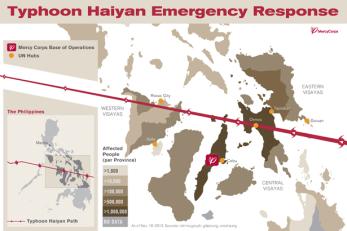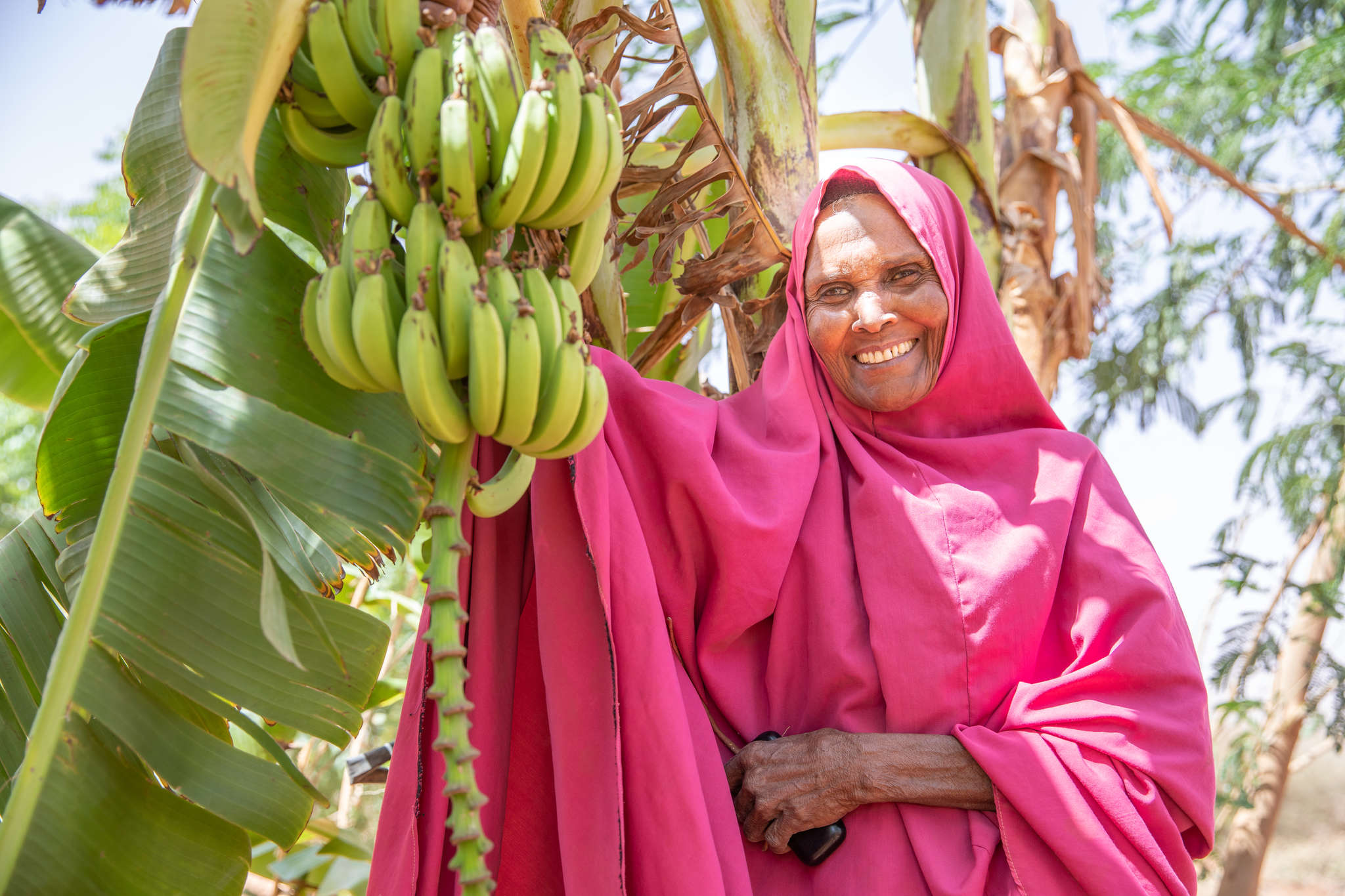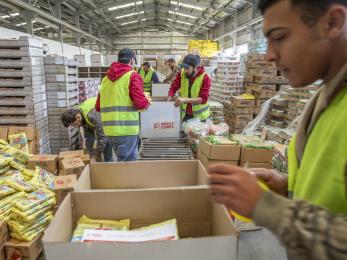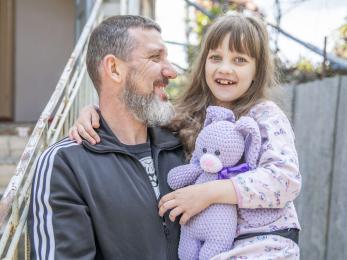The facts: What you need to know about Super Typhoon Haiyan

Editor's note: Numbers are changing daily as more reports of affected and displaced are verified by the Philippines government. We will update the information below accordingly. Our sources are UN OCHA and the Philippines government.
On November 8, 2013, Super Typhoon Haiyan cut a devastating path across the central Philippines. More than 16 million people were affected across the Visayas region, where the storm is known as Yolanda.
Mercy Corps' emergency team is working to rush supplies like clean water, food packages, blankets and hygiene kits to survivors.
You can help by donating to our Humanitarian Response Fund ▸
Here are some key facts about the tragic situation in the Philippines right now:
Super Typhoon Haiyan
-
Storm strength: Equivalent of Category 5, the highest — and the strongest tropical cyclone to ever make landfall
-
Sustained wind speed at landfall: 195 miles per hour — breaking the previous highest record of 190 mph
-
Wind gusts: Up to 235 miles per hour
-
Surge in sea level during the storm: 13 feet
Impact
-
World Health Organization disaster classification: Category 3, the highest — on par with the 2004 Indian Ocean tsunami and the Haiti earthquake in 2010
-
People affected: More than 16 million
-
Death toll: More than 6,000
-
People injured: More than 27,000
-
People displaced: 4.1 million
-
People in need of food: 2.5 million
-
Amount of area destroyed in the storm's path: 70 to 80 percent
-
Homes damaged or destroyed: 1.2 million — over half of which were completely destroyed
-
Amount of homes lost in hardest-hit areas: 90 percent
-
Most immediate threats to survivors (in order of urgency): Lack of safe drinking water, no shelter, untreated injuries and illnesses, insufficient food, lack of sanitation and personal hygiene items, lack of household supplies like fuel
The Philippines
-
Population: 98 million
-
Population living on less than $2 per day: 2 in 5
-
Number of babies to be born in typhoon-affected areas this month: 12,000
-
Share of roads that are paved: 22.2 percent
-
Global rank on infrastructure quality in 2009: 94
-
Global rank on infrastructure quality in 2011: 113
Emergency response
-
Members of Mercy Corps' emergency team: Experts in water, sanitation, logistics and distribution
-
Number of disasters our team has responded to since 2007: 23
-
Our immediate priorities: Food, water, hygiene and temporary shelter
-
Source of emergency relief supplies: Local wholesalers and vendors, to support the recovery of the local economy
-
When a larger permanent team is likely to be in place: December, with a focus on recovery and long-term rebuilding
-
Our early recovery efforts: Providing shelters materials and cash to rebuild; giving children a safe space to recover from trauma; pursuing larger-scale water and sanitation solutions


